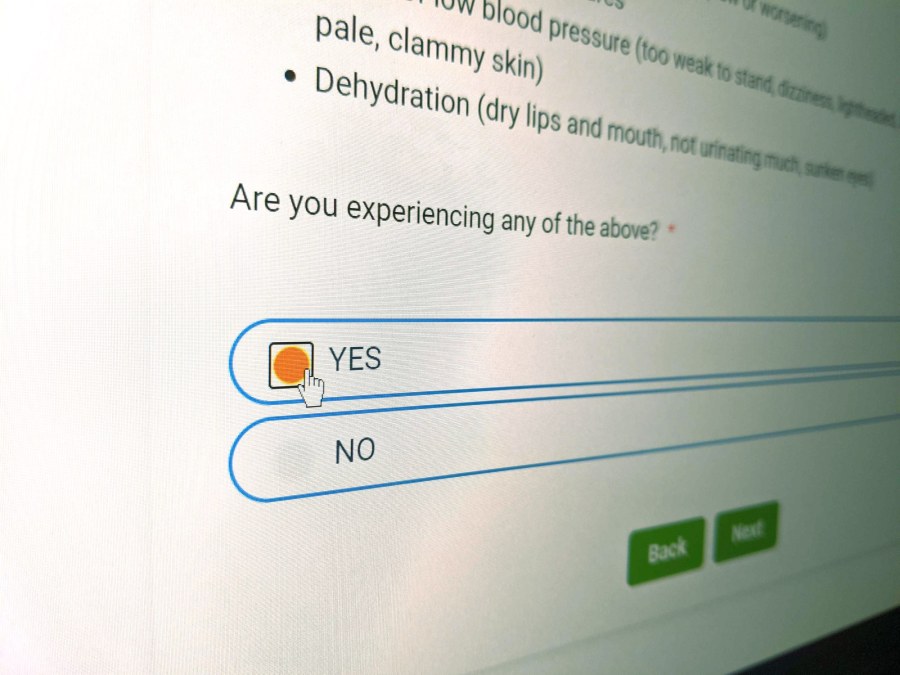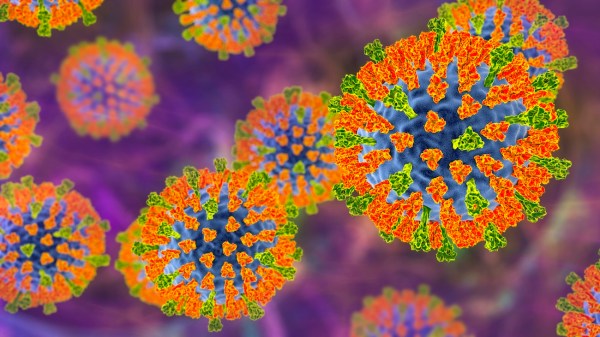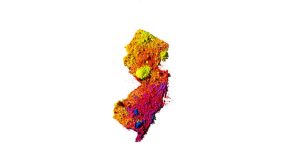How New Jersey tracked COVID-19 when no data was available

Nearly one year since the pandemic first upended our lives, there is a deluge of data on everything from the number of new COVID-19 cases per day to the rate of transmission, ventilators in use to PPE stockpiles.
That’s a far cry from last March when state officials had little information about how quickly the virus was spreading and where cases were emerging. Due to the limited availability of COVID-19 testing at the time, decision makers had no way to easily understand the on-the-ground conditions or the pandemic’s scale, making it difficult to allocate scarce resources like ventilators or personal protective equipment.
As officials scrambled to contain the pandemic, the New Jersey State Office of Innovation, which is tasked with working collaboratively to improve the design and delivery of services, sought to create a solution that would inform decision makers on the prevalence of COVID-19 in the state.
Drawing inspiration from the Indian state of Kerala, Canada’s province of British Columbia, and Singapore, each of which had created online symptom-tracking tools at the onset of the pandemic, the Office of Innovation, collaborating with the New Jersey Department of Health, set out to develop its own version for New Jersey.
In the absence of widespread testing, the online symptom checker was designed to meet two critical needs: providing state officials with a way to measure the prevalence of COVID-19 and providing worried New Jerseyans with medical guidance.
Just as the state lacked data to make its decisions, so too did the general public. Fear and confusion were rampant as New Jerseyans wondered how COVID-19 spread, what its symptoms were and what to do if they got sick. The state’s call centers were overwhelmed by people asking basic questions like, “I have a cough, do I have COVID?” or “I have a fever, should I go to the hospital?”
Within hours of hearing about the symptom checker, the Office of Innovation had built a prototype, and by March 19 — just 15 days after the first reported case of COVID-19 in the Garden State — New Jersey’s online COVID-19 symptom checker was officially launched.
Using guidance from the Centers for Disease Control and Prevention at the time, users were asked a series of questions about their health, symptoms they were experiencing and their risk level in terms of age and underlying conditions, as well as their ZIP code. Depending on their responses, users were then instructed to seek emergency medical attention, call a medical professional for additional follow up or to isolate at home. As our understanding of the virus has evolved, the symptom checker has been continually updated to reflect the latest guidance from health officials.
With the symptom checker in place, New Jerseyans had a resource that answered their basic questions, greatly reducing the strain on the state’s call centers.
Meanwhile, state officials were able to get a better sense of the swiftly changing conditions on the ground. By late April, some 200,000 people in New Jersey, or roughly 2% of the entire state, had used the symptom checker, offering officials a wealth of granular, ZIP-code-level data at a time when information was scarce. By February 2021, the symptom checker had been used over 600,000 times.
In partnership with Lakshminarayanan Subramanian, a Courant Institute of Mathematical Sciences professor at New York University, the Office of Innovation incorporated the data from the symptom checker into several mathematical models to track and predict the spread of COVID-19.
The symptom checker proved particularly powerful as it identified risk at a ZIP-code level by sorting individuals into one of five risk categories depending on their answers to the questionnaire. This enabled the state to calculate roughly how many people were at high risk of COVID-19 in a particular ZIP code, which helped predict future hot spots and even which hospitals were likely to see spikes.
By late March, for instance, officials were able to prepare for a large spike in COVID-related 911 calls in several ZIP codes in Hudson, Essex, Union and Middlesex counties after they had seen large increases of individuals reporting serious COVID-related symptoms through the symptom checker a week before.
To ensure information like this could save lives, professor Subramanian worked with the Office of Innovation to translate the symptom checker data into plain-language reports that were circulated every day to senior New Jersey officials. These reports helped officials decide where to deploy ventilators, PPE stockpiles and other critical resources.
While the symptom checker itself was a simple tool, built in just a few hours, it serves as a powerful reminder that solutions to difficult problems do not need to be complex or ground-breaking — but, rather, effective. Unlike start-ups, governments do not have to be unique or original to be innovative. Effective solutions are all that matter when it comes to serving others — and if it’s simple, so much the better.
Eugene K. Chow is a research fellow at the New Jersey State Office of Innovation.
This piece is part of StateScoop’s Special Report on Data & Analytics.

This story was featured in StateScoop Special Report: Data and Analytics (2021)






